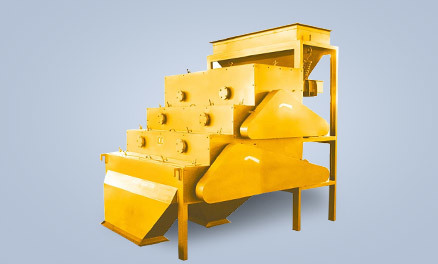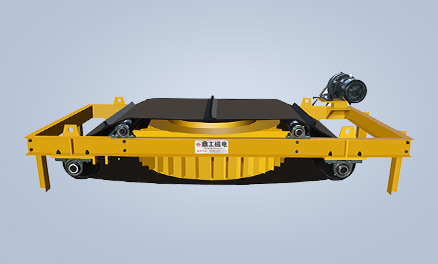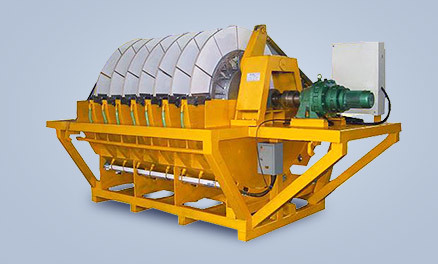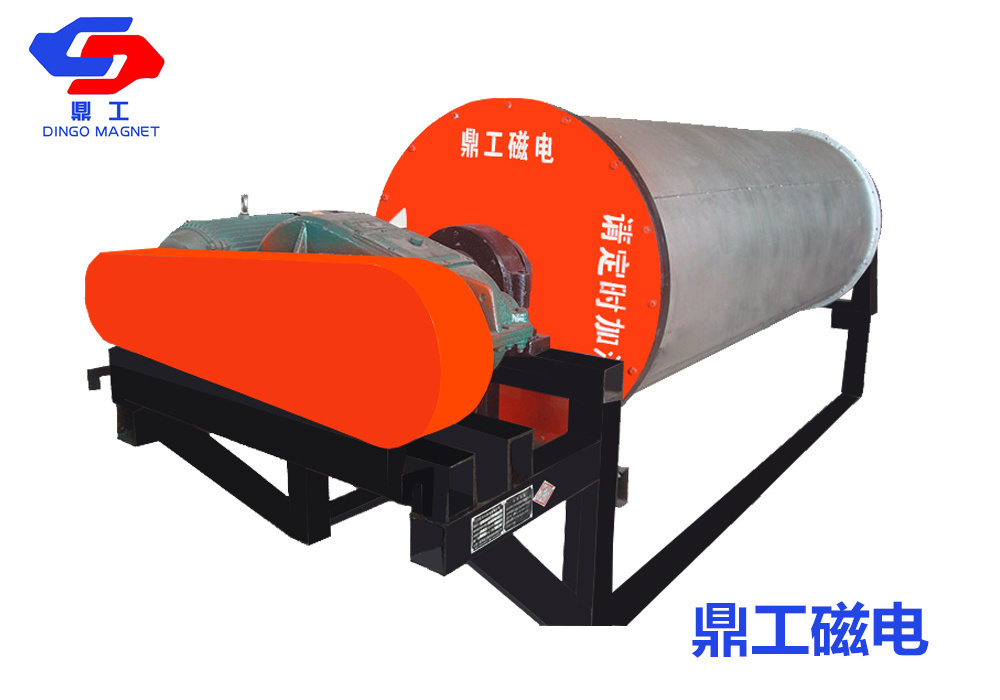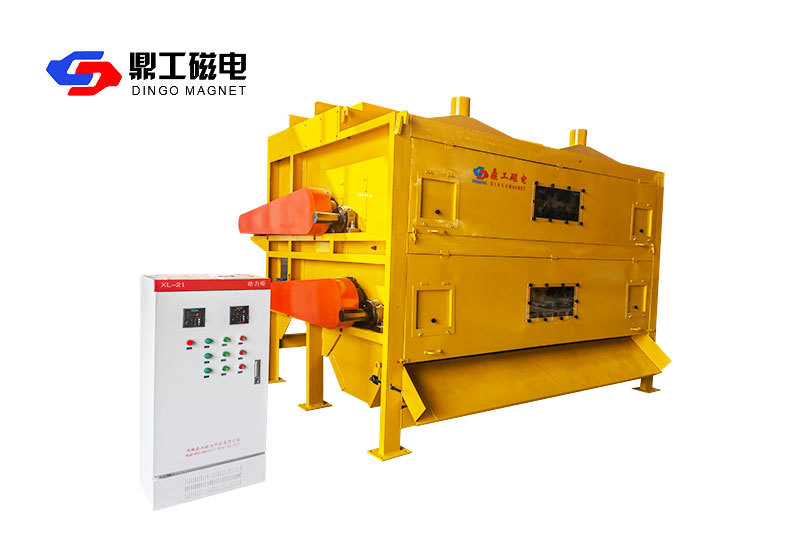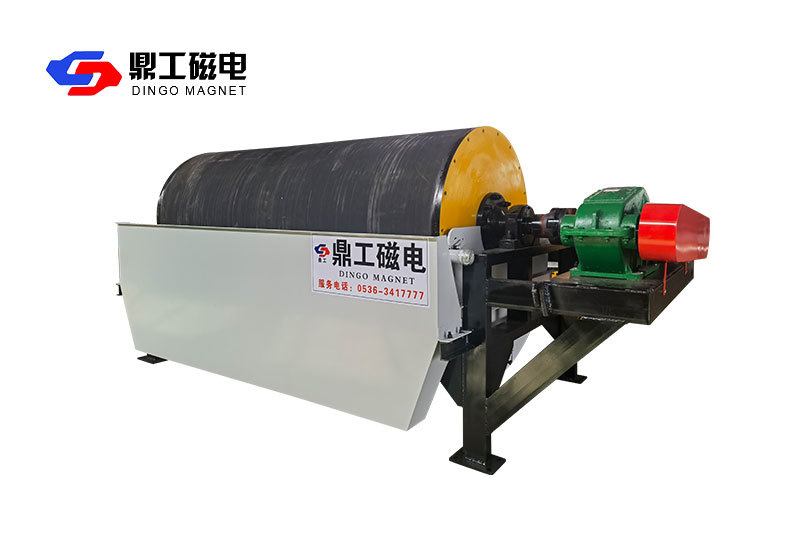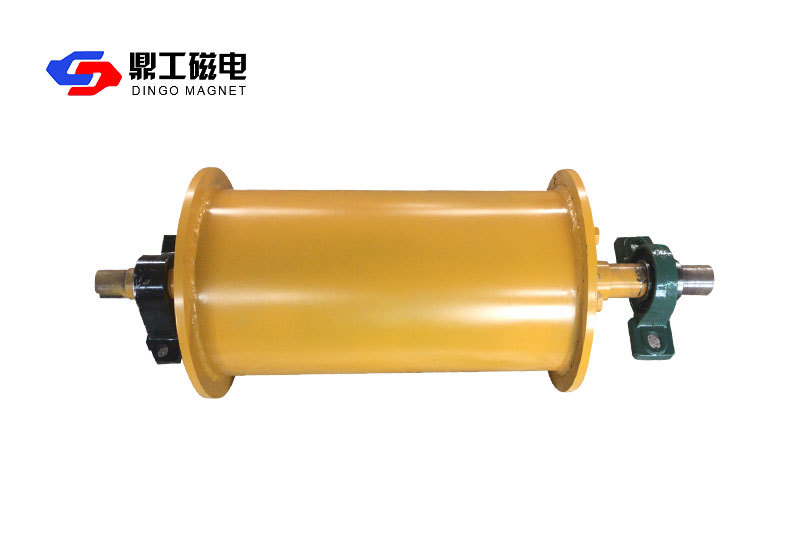29
2023
-
03
Flat magnetic separators are widely used for maintenance and replacement. Welcome to call Dinggong Magnetoelectronics Technology Co., Ltd
Flat magnetic separators are widely used. Magnetic separators are overhauled and replaced. Welcome to call Dinggong Magnetoelectric Technology Co., Ltd.
Flat magnetic separators are widely used. Magnetic separators are overhauled and replaced. Welcome to call Dinggong Magnetoelectric Technology Co., Ltd. Permanent magnetic cylinder magnetic separators. Under normal conditions, non dry magnetic separation of magnetite, magnetic pyrite, roasted magnetic ore, ilmenite and other magnetic minerals with a particle diameter of 3.1 mm can be carried out, as well as iron removal of coal balls, general metal ores, construction materials and other magnetic minerals. In short, what are the several factors that directly affect the magnetic separation of permanent magnet cylindrical magnetic separators? Let's take a look together. The thickness composition of the material: It is closely related to the particle diameter and magnetic material content of the material processing, and handling fine particles is much more complex than coarse particles. Processing coarse particles is about 1.5 times thicker than processing fine particles. The diameter of particles at the particle level during processing will reach 4 times the maximum particle size. For fine particles, the flat magnetic separator can reach a thickness of about 10 particles at the material level. When the content of magnetic materials in the mixed material is not very high, the ore layer needs to be slightly thinner. If the ore layer is too thick, how can the magnetic material at the bottom be squeezed by the material above? If the magnetic force cannot be lifted, the recovery rate will decrease to a certain extent. When the magnetic particles are relatively high, the thickness of the ore layer becomes very thick. Magnetic field size and material layer gap: It is closely related to the particle diameter, magnetic field, and processing requirements of the processed material. When the working gap is determined, the magnetic field strength between the two depends on the number of induction coils. The number of coil turns cannot be adjusted anymore, and the magnetic field strength can only be adjusted by changing the size of the excitation current.
For cleaning rutile with strong magnetic field, use a strong magnetic field. The magnetic field of the flat magnetic separator will become relatively high when it is used to process magnetic mineral materials and magnetic separation operations with weak magnetic field. The current will increase, changing the size of the working gap. If the magnetic field intensity is relatively large and the gradient of the magnetic field changes, the gap of the magnetic field force will increase. Overall, reducing the particle size as much as possible is used to change its recovery rate. In the case of selecting materials, adjust the gap to a certain size and choose to become larger to achieve the goal of improving the ore grade. At the same time, increase the size of the machine excitation current to ensure the strength of the magnetic field. Thirdly, the size of the ore entry rate: The size of the ore entry rate is determined by the speed of the vibrating material trough (or belt). Its feeding rate is determined by the force exerted on the length of the material particles that remain under a certain magnetic force. When the speed is relatively high, the pause time of the particles in the magnetic field strength is relatively short. The mechanical force borne by the particles is mainly gravity and inertial force. Gravity is a constant, and inertial force is measured by the square of velocity. Under the strength of the magnetic field, weakly magnetic particles are subjected to a certain amount of magnetic force. Therefore, if the rate exceeds a certain limit and the inertia force increases, the magnetic force adsorbed will be insufficient, resulting in a low acceptance rate. Therefore, when selecting weakly magnetic minerals, it is advisable to accept a feeding rate lower than that of strongly magnetic minerals. Usually during the selection process, there are more monomer particles and stronger magnetism in the quality guess, which can increase the ore feeding rate. When scanning, there are more connected particles in the quality guess, and the magnetic field will become weaker. In order to reduce the size of the ore feeding rate, it is necessary to use a lower one; When disposing of particles, in order to facilitate the loosening of mineral particles, the vibration rate of the vibrating material tank should increase and the amplitude should decrease; When disposing of coarser particles, it becomes the opposite.
The handling status of the matter should be determined through implementation in accordance with the properties of magnetic particles and the annotation of the quality requirements for selection. When dealing with magnetic materials, the mixed material should be dried directly to increase the number of particles, which is beneficial for navigation. Assuming that the appreciation range is relatively wide to increase the number of particles, it is precisely because the magnetic force difference of its fine particles is increasing, and the selection situation is also irrelevant. The more the original particle sieve is classified, the better the navigation will be. The permanent magnetic drum magnetic separator can generally be used for wet magnetic separation of strong magnetic ore, magnetic pyrite, roasted ore, zinc ore and other materials with particle size less than 3mm, and is often used for iron separation of coal balls, general metal ores, building materials and other materials. What are the various factors that indirectly affect the wet separation of permanent magnet cylindrical magnetic separators? Let's learn together as follows. The thickness of the given material: It is closely related to the processing thickness, particle size, and non magnetic material content of magnetic materials. Handling fine particles is much more troublesome than handling coarse particles. The thickness difference between the processed material layers of coarse and fine particles is approximately 1.5 times. The particle size in the treatment may reach about 4 times the maximum particle size, and for fine particles, the thickness of the material level may reach 10 particles. When the content of magnetic ore is very low, the ore layer needs to be slightly thinner. How can the non magnetic material in the lower layer be compressed by the material above when the ore layer is not thick? If the magnetic force cannot be absorbed, the recovery rate will decrease to a certain extent. When the magnetic particles are relatively high, the ore layer will become thicker. Secondly, the strength of the magnetic field and the size of the material layer gap: It is closely related to the particle size, magnetic size, and magnetic separation requirements of the magnetic ore to be processed. When the working gap is determined, the strength of the magnetic field between the magnetic poles will depend on the number of turns of the induction coil. The number of turns of the coil is variable, and the magnetic field strength can only be adjusted by changing the current size.
To determine the concentration of rutile with a large magnetic field, a weak magnetic field should be used to determine the material and scavenging work with a small magnetic field, and the magnetic field strength should be relatively high. The current will increase, and when the working gap is small and the magnetic field force is small, if the gradient of the magnetic field changes and the magnetic field force changes, overall, the size of the treated particles should be minimized as much as possible to increase their recovery rate. When selecting a flat magnetic separator, the gap should be increased to increase selectivity and achieve the goal of improving grade. At the same time, the size of the machine's excitation current should be increased to ensure the required magnetic field strength. The size of feeding speed: The size of feeding speed is determined based on the movement speed of the vibrating material groove (or belt). Its feeding rate determines the resistance of the ore particles to stop in the magnetic field. The higher the speed, the longer the particles stay in the magnetic field. The magnitude of the mechanical force borne by the particles is mainly divided into mechanical force and inertial force. Gravity does not change, and inertial force is measured by the square of velocity. The magnetic force exerted by weakly magnetic particles under the intensity of a magnetic field is limited, therefore, if the rate exceeds a certain limit, the magnetic force adsorbed will not be sufficient due to the increase of inertial force, resulting in a low acceptance rate. Therefore, when selecting weakly magnetic minerals, it is advisable to accept a feeding rate lower than that of strongly magnetic minerals. Usually, during the selection process, there are more monomer particles with stronger magnetic properties, which can increase the ore feeding rate. However, during the scanning process, there are more continuous reactions and the magnetic properties are very weak. In order to improve the ore feeding rate, the size should be relatively low; When disposing of particles, in order to make the ore particles more loose, the vibration frequency of the vibrating material tank should be higher and the amplitude will become smaller and smaller; When dealing with coarse particles, the opposite is true.
The same operating environment should be determined from the beginning to the end based on the ore properties and the quality requirements for sorting. When determining the particle size of the material, the mixed material should be added through a relatively dry mineral material, which is beneficial for the regression of the index. If a wider mineral material is allowed to be added, its finer particles should be subject to a greater difference in magnetic force. In addition to this, it also improves the practical selection factors of the selection conditions. The more mineral materials are selected for the original particles of the flat magnetic separator, the better the index. Permanent magnetic cylinder magnetic separators should often be used for water adding magnetic separation of magnetite, magnetite pyrite, roasted ore, ilmenite and other mixed materials with particle size less than 3.3mm, and are often used for iron removal of mixed materials such as mixture, non-metallic ore, construction materials and so on. So what are the various factors that directly affect the water separation of permanent magnet cylindrical magnetic separators? Let's learn together. Firstly, the thickness of the feeding layer of magnetic mineral materials: it is closely related to the particle size and magnetic mineral content of the processing thickness of magnetic materials, and the processing thickness of coarse particles is thicker than that of fine particles. The thickness of processing coarse particles is approximately 1.5 times thicker than that of processing fine particles. The particles at the medium particle level may reach about 4 times the maximum particle level, and for fine particles, they can reach a thickness of about 10 particles at the material level. When the content of magnetic materials in the raw material is not high, the feeding layer should be thinner. How can the magnetic ore material in the thick lower layer of the ore layer be compressed by the upper material? If the magnetic force cannot be absorbed, the recovery rate will decrease.
PRODUCTS
PRODUCTS
Related Products


